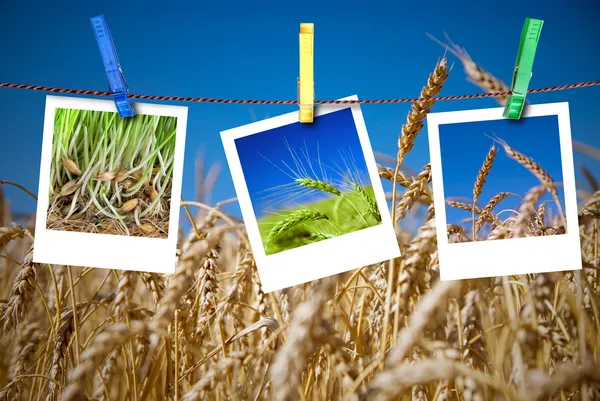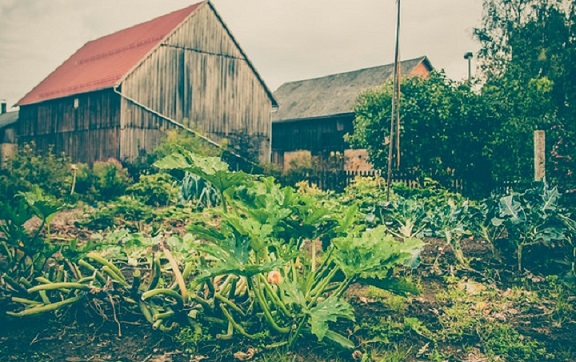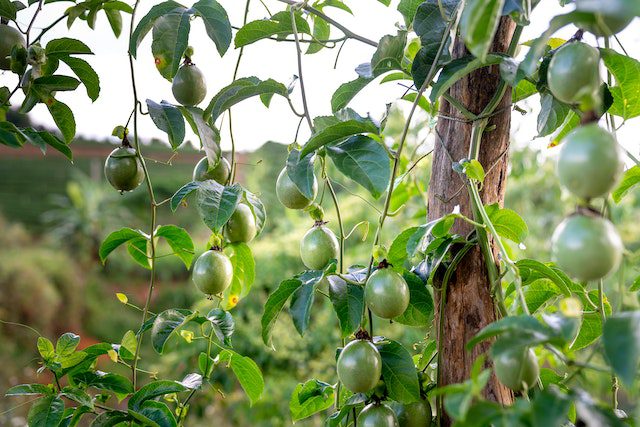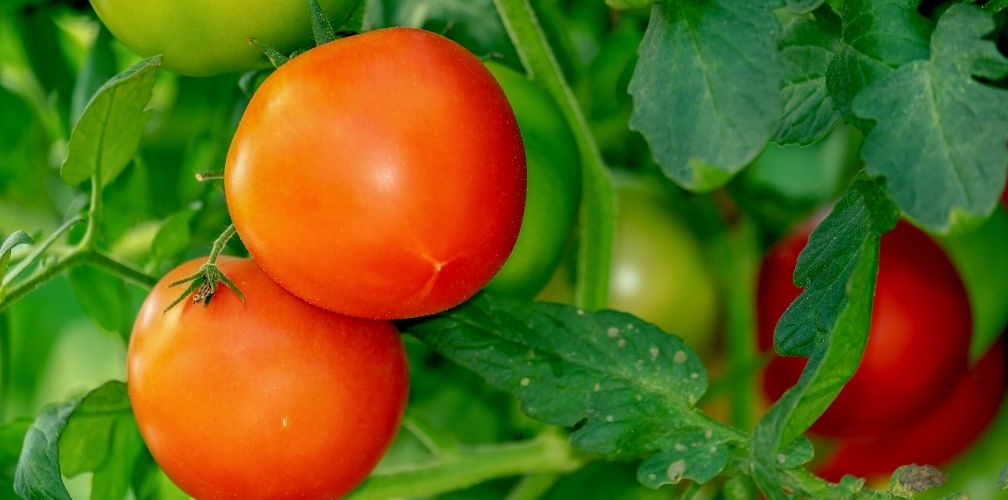Are you an aspiring farmer or an established grower looking to learn more about wheat farming in Kenya?
In this guide, you will learn secret aspects of commercial wheat farming like the best climatic and soil conditions, land preparation, planting , harvesting and value addition. You will also learn effective pest and disease management strategies, sustainable farming practices, and an accurate estimate of costs and profits of wheat farming in Kenya per acre. .
By the end of this guide, you will have a clearer understanding of what it takes to cultivate wheat commercially in Kenya. It is my hope the farming guide helps you to increase your profits and yields.
Overview of wheat farming and consumption in Kenya
Wheat is the second most widely produced and consumed cereal in Kenya after maize. It is widely grown as a significant cash crop and food crop for many farmers in the country. There is a high rise in demand for wheat products is driven by an expanding middle class and an increasing preference for wheat products.
Wheat demand exceeds local supply by far. According to AFA, the wheat sub sector contributes Ksh. 20 billion to the GDP and employs over half a million people. Other key facts about wheat farming in Kenya are as follows;
- Average the area under wheat farming is 146,800 Ha.
- Estimated production 365,600 MT (4.05 million 90Kg bags).
- Estimated wheat annual consumption is 1,658,000 MT (18.4 million (90kg) bags)
- The supply gap of 14.35 million 90 kg is filled by imports majorly from Russia and Ukraine
- Per capita wheat consumption has been increasing by 4% per annum.
- (Source: statistics unit, Ministry of agriculture)
Where to Grow Wheat in Kenya
The major wheat-producing regions in Kenya include Narok, Nakuru and Uasin Gishu counties where the climatic conditions and soil types are most conducive for wheat cultivation. Other regions include Nyandarua, Nyeri Laikipia and Meru Counties. It’s also becoming one of the fastest growing agribusiness in other counties as an alternative to traditional crops like maize.
To gauge if your place is suitable for wheat farming, check the following soil and weather conditions.
- Climate: Moderate temperatures ranging from 15°C to 25°C.
- Altitude: highland areas, with an altitude ranging from 1,500 to 2,500 meters above sea level.
- Soil Type: Well-drained, fertile soils with a pH level between 6.0 and 7.5. Clay and loamy soils are ideal as they provide good moisture retention while allowing for adequate drainage.
3. Wheat Varieties Suitable for Kenya
Choosing the right wheat seed variety is important for high quality yields. Kenya has over 30 wheat varieties that are both productive and resilient to local weather conditions. The table below have some of the most commonly grown varieties:
| Wheat Variety | Year Released | Yield (Tons/Ha) | Yield (90 kg Bags/Acre) | Superior Parameters |
|---|---|---|---|---|
| K. Kasuku | 2019 | 7.00-8.00 | 31.50 – 36.00 | High yield, resistant to lodging |
| K. Jacana | 2019 | 6.50-8.00 | 29.70 – 36.00 | Moderate resistance to stem rust |
| K. Impala | 2020 | 7.00-8.00 | 31.50 – 36.00 | Good milling quality, resistant to stem rust |
| K. Hyrax | 2020 | 6.50-7.50 | 29.70 – 33.80 | Resistant to yellow rust |
| Eagle 10 | 2011 | 6.00-7.00 | 27.30 – 31.50 | Early maturing, good baking qualities |
| Njoro Bw 2 | 2002 | 3.70-8.00 | 16.90 – 36.00 | Tolerant to acidic soils, resistant to lodging |
| Eldo Baraka | 2013 | 4.44-7.78 | 20.00 – 35.00 | Resistant to stem rust |
| Eldo Mavuno | 2014 | 5.55-7.78 | 25.00 – 35.00 | Resistant to stem rust and moderate drought tolerance |
To select the best wheat variety, consider factors such as growth habits, disease resistance, and market demand for specific grain qualities. Consulting your local agricultural extension officers and neighbouring farms can provide more insights into the best varieties for specific regions.
Land Preparation for Wheat Farming
Land preparation is one of the key steps for successful wheat farming. A well prepared land has better seeds germination, root development, and moisture retention. These factors are key in getting higher yields per acre.
1. Ploughing and Tilling
The first step in land preparation involves ploughing the land to loosen the soil. Some farmers use a tractor disc plough or oxen plough. Do it early, ideally at the end of the previous crop season to allow for organic matter to decompose, thereby improving soil fertility. Aim to till the soil to a depth of about 15-20 cm.
Tilling or harrowing follows, this will break up the soil clumps and clods further. It will make it easier for the wheat seeds to establish roots. farmers should If the soil is hard or compacted, deeper tilling might be required. Tilling also helps control weeds and pests that might have settled in the soil.
2. Adding Organic Matter and Fertilisers
Using organic fertilisers, such as compost or well-rotted manure can improve the soil structure, moisture retention, and nutrient availability. Applying it during tilling ensures that the nutrients are evenly distributed.
Adding the right amount of fertilisers is vital to give wheat crops a strong start. For planting your wheat, use the Diammonium Phosphate (DAP). Conduct a soil test to determine the specific nutrient requirements. Over-fertilization can lead to excessive plant growth with weak stems that are prone to lodging (falling over).
3. Levelling and Seedbed Preparation
A well-levelled field promotes even water distribution, reducing the risk of waterlogging or drought stress in certain areas.You can use a harrow or a levelling board for this.
The final step in land preparation is seedbed preparation. A fine, firm seedbed ensures good seed-to-soil contact, which is critical for uniform germination. The seedbed should be free from clods and large stones, which can impede the growth of young wheat plants.
Wheat Planting Techniques
Time the planting of your seeds at the onset of the rainy season. In Kenya, this is done from mid march to early may. Wheat needs consistent moisture for optimal growth, relying on rainfall is cheaper than irrigation.
Recommended Seed Rate and Spacing
The recommended seed rate for wheat in Kenya is around 120-150 kg per hectare (48.58-60.70 kg/acre.). The exact amount varies depending on the specific wheat variety and the planting method. Machine planting, using a seed drill ensures even spacing and depth, which promotes uniform growth and easier management of the crop.
Space your wheat at about 15-20 cm between rows and 2-3 cm between seeds. This spacing will allow enough room for each plant to access nutrients, water, and sunlight. It will promote healthy growth and reduce competition between plants.
Depth of Planting
Plant your Wheat seeds at a depth of 2-5 cm. Shallow planting leads to poor germination. Planting your seeds too deep can delay seedling emergence. The depth of planting also depends on soil moisture levels; if the soil is dry, slightly deeper planting may be necessary to ensure the seeds reach moisture.
Irrigation and Water Management
While rainfall is the main source of water for wheat farming in most parts of Kenya, irrigation may be necessary in regions with erratic rainfall patterns. Drip or sprinkler irrigation systems can help provide the right amount of water during critical growth stages, especially in drier areas.
Water management is crucial during the early growth stages (germination and tillering) and the grain-filling stage, as water stress during these periods can lead to lower yields. Farmers should aim to maintain consistent soil moisture throughout the growing season.
Pest and Disease Management in Wheat Farming
Wheat farming in Kenya is vulnerable to several pests and diseases that can drastically reduce your yields. Below is an outline of the most common pests and diseases affecting wheat crops in Kenya and how to control them.
Common Pests
1. Wheat Stem Borer
The wheat stem borer feeds on the stems of young wheat plants. It causes stunted growth and reduced yields in the long run. To control this pest, you can use biological control methods such as releasing parasitoids like Trichogramma or use insecticides like pyrethroids at the larval stage.
2. Aphids
Aphids suck the sap from wheat plants. This can weaken them and potentially transmit viral diseases. These pests are often more prevalent in dry conditions. You can use neem-based bio-pesticides or insecticides like dimethoate to control aphid infestations.
Common Diseases
1. Wheat Rust (Stem and Leaf Rust)
Wheat rust, particularly stem rust and leaf rust, is a fungal disease that thrives in warm, humid conditions. It manifests as reddish-brown or yellow pustules on the leaves and stems, weakening the plant. Farmers can control rust by planting resistant wheat varieties, such as Duma 88, and applying fungicides like Mancozeb or Propiconazole during early infection stages.
2. Fusarium Head Blight
This disease affects the wheat head, causing discoloration and shriveled grains. It often results from wet, humid conditions during flowering. To manage Fusarium head blight, practice crop rotation and avoid over-irrigation. Fungicides can also be applied preventively at the flowering stage.
Integrated Pest Management (IPM)
To minimize pest and disease damage, adopt an integrated pest management (IPM) approach. It includes cultural practices like crop rotation, use of resistant seed varieties, timely planting to avoid pest cycles, and the judicious use of pesticides. IPM not only reduces the reliance on chemical pesticides but also promotes sustainable farming by preserving the ecosystem’s balance.
Wheat Harvesting and Post-Harvest Handling
Harvest your ripe and dry wheat at the right time for maximum grain quality and yield. Observe the recommended post-harvest handling, including proper storage, to ensure the wheat remains marketable.
1. Determining the Right Time to Harvest
Wheat is typically ready for harvest 4-5 months after planting. The days to harvest depends on the variety and growing conditions. You can determine the right time for harvesting by checking the moisture content of the grain, which should be around 15%. Another indicator is when the wheat plants turn golden brown, and the grain hardens.
Avoid harvesting your wheat when the grains are still too moist, as this can lead to spoilage during storage. On the other hand, delaying harvest too long can result in shattering, where the grains fall off the plant, leading to yield losses.
2. Harvesting Techniques
In Kenya, most wheat harvesting is done using combine harvesters, which cut and thresh the wheat in one operation. For smaller-scale farms, manual harvesting with sickles is employed. Regardless of the method, care should be taken to minimize grain damage during harvesting.
3. Post-Harvest Handling and Storage
Proper post-harvest handling is crucial to prevent losses due to pests, mold, and spoilage. After harvesting, dry your wheat to a moisture content of 12-13% before storage. Drying can be done naturally by spreading the grains out in the sun or using mechanical driers and dehydrators for larger volumes.
Once dry, the wheat should be stored in clean, dry facilities, ideally in bags stacked on pallets to prevent contact with moisture. Fumigation may be necessary to protect against storage pests such as the grain weevil. Regular monitoring of stored wheat is essential to detect any issues early and prevent significant losses.
Where to Market and sell your Wheat in Kenya
The wheat market in Kenya offers numerous opportunities, especially for commercial farmers who can meet the country’s demand for this staple crop. However, marketing wheat requires careful consideration of factors such as timing, pricing, and buyer networks.
1. Market Channels
Farmers can sell their wheat through various channels, including:
- Milling Companies: Most of Kenya’s wheat is purchased by milling companies, which process it into flour for local consumption. Farmers can establish direct contracts with millers to ensure a stable market.
- Local Markets: In some regions, farmers may sell wheat directly to consumers or through brokers in local markets. While prices may fluctuate, this can be a viable option for small-scale farmers.
- Cooperatives: Joining a farmers’ cooperative can provide better bargaining power and access to larger markets. Cooperatives also offer support services such as storage, transportation, and financial assistance.
2. Price Fluctuations
Wheat prices in Kenya are influenced by factors such as global market trends, local supply and demand, and government policies. Farmers should stay informed about market conditions to determine the best time to sell their wheat for maximum profitability. Price fluctuations can be mitigated by selling through contracts or cooperatives, which often offer more stable prices.
3. Value Addition Opportunities
To increase profitability, explore value addition options such as milling wheat into flour or producing wheat-based products like pasta and baked goods. This not only increases the market value of the crop but also provides a buffer against fluctuating wheat prices.
Challenges affecting wheat farmers in Kenya
Despite the potential for high profitability, wheat farming in Kenya is not without its challenges. Farmers often face issues such as fluctuating market prices, unpredictable weather patterns due to climate change, and the threat of pests and diseases.
Below is a list of the key challenges according to the latest market survey.
- Inadequate Information: Many wheat farmers lack access to up-to-date agronomic knowledge, relying instead on advice from neighbors or agro-dealers, which may not always be accurate or suited to their specific needs.
- Poor Extension Services: Extension services are often insufficient, with limited outreach to farmers, further exacerbating the lack of proper farming knowledge and guidance.
- Increased Incidences of Pests: Pests such as brome grass, wild oats, rust, and fusarium head blight are becoming more prevalent. Controlling these pests makes up around 32% of the total production costs, putting a significant strain on profitability.
- Quelea Bird Menace: Quelea birds cause substantial damage to wheat crops by feeding on the grains, often leading to considerable yield loss, especially in large infestations.
- High Cost of Inputs: Fertilizers, seeds, and pesticides are expensive, and many farmers struggle to access high-quality inputs, further limiting production efficiency.
- Erratic Rains: Unpredictable rainfall during the harvesting period often leads to grain sprouting, which lowers the wheat grade and reduces market value.
- Poor Enforcement of Contracts: Contracts between farmers and buyers (millers) are often not enforced properly, leading to unfair terms, delayed payments, or price manipulation, which harms the farmers’ income stability.
- Land Subdivision: Increased subdivision of land, especially in productive areas, reduces the total area available for large-scale wheat farming, lowering economies of scale and productivity.
Emerging sustainable wheat farming practices
Sustainable farming practices, such as crop rotation, integrated pest management, and soil conservation, farmers can improve wheat yields and protect the environment. Additionally, understanding them improves your efficiency and profitability. They include;
| Sustainable Practice | How to Apply |
| Crop Rotation | Rotate wheat with legumes like beans or peas to break pest cycles, improve soil fertility, and reduce weed growth. |
| Integrated Pest Management | Use a combination of biological controls (natural predators), mechanical weeding, and targeted pesticide applications to control pests like Quelea birds and rust. |
| Soil Conservation | Apply minimum tillage, use cover crops, and plant along contours to prevent soil erosion and improve moisture retention. |
| Water Management | Install drip irrigation systems and use water harvesting techniques to efficiently manage water, especially in areas with erratic rainfall. |
| Organic Fertilizers | Use manure, compost, or other organic inputs to enrich soil health and decrease dependency on chemical fertilizers. |
| Certified Seeds & Resistant Varieties | Plant certified seeds and pest-resistant varieties (e.g., K. Impala) to increase yields and reduce losses from diseases and pests. |
| Proper Timing for Planting | Use a wheat crop calendar for planning. Monitor weather patterns to plant and harvest wheat at the right time, avoiding adverse conditions such as late rains or drought. |
| Weed Management | Apply herbicides early, use crop rotation, or manually remove weeds like brome grass and wild oats to reduce competition for nutrients and water. |
| Bird Deterrents | Install nets, use scarecrows, or set up traps to manage Quelea birds and prevent significant crop damage. |
| Cooperative Models | Join farmer cooperatives to access affordable quality inputs, share pest control resources, and negotiate better market prices. |
Conclusion
Wheat farming in Kenya is a profitable agribusiness idea to diversify your agricultural ventures or expand into a high-demand crop. With proper land preparation, planting, and management practices, wheat can provide excellent returns, both for local consumption and commercial markets.
For small-scale and large-scale farmers alike, the key to success in wheat farming lies in informed decision-making, timely execution of farming activities, and continuous learning about new technologies and practices as outlined in this guide.



